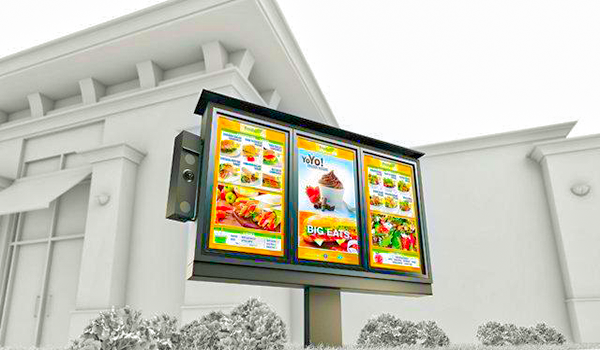Digital Signage: Where Engagement Meets Innovation
Introduction
Welcome to the world of digital signage in which engagement is a crucial ingredient! If you’ve been fascinated by a vibrant display at an outlet mall or accompanied by an interactive kiosk at the airport, you’ve witnessed the wonder of digital signs. The revolutionary technology has revolutionized how businesses interact with their customers and has made interactions more enjoyable as well as informative and unforgettable. What exactly is digital signage what is its purpose, and how it’s essential in the current marketing landscape? Let’s explore and learn more!
The Evolution of Digital Signage
Initial Beginnings
Digital signage has advanced from its initial humble start. It began with basic LED tickers showing the market’s information and simple announcements. The initial forms were only static in their abilities.
Technological Technology
Thanks to technological advances, digital signage has developed into an incredibly versatile and exciting technology for communication. HD displays, high-end processors, and advanced software have opened the door to more interactive and engaging media. Integration of internet connectivity has expanded its capabilities, providing live updates in real-time and remote control.
The Current Trends
Digital signage today can be more than an electronic screen that displays information. It’s an integral component of the experience for customers, with interactive features, personal information, and immersive images. From shopping malls to offices in corporate settings, digital signage is all around, increasing interaction and sending out powerful messages.
Different types of Digital Signage
LED Displays
These LED screens are one of the sought-after varieties that digital signs. They are renowned for their vivid color and brightness; they’re ideal for advertising outdoors and in large spaces. They are efficient in energy use and provide excellent visibility in bright light.
LCD Screens
LCD screens are typically utilized for indoor uses. They offer high-resolution pictures for informational, digital menus, displays, and navigation systems. LCDs are inexpensive and available in various dimensions to meet the needs of different users.
Projection Screens
Projection screens provide a distinct method of digital signage. They can be used in various ways and to cover huge areas, making the perfect choice for parties or conferences as well as an immersive experience. They can project content onto any surface. They can also add creative flair to your signs.
Advantages of Digital Signage
Improved Customer Engagement
One of the significant advantages of digital signage lies in its capacity to attract and retain attention. Visuals that are dynamic, engaging content and interactivity features draw customers’ attention in ways static signage cannot. This increases branding awareness and increased customer loyalty.
Cost-Effectiveness
Digital signage is cheaper when in comparison to conventional print media. After the initial setup, updating the content is relatively inexpensive and can be performed online. It eliminates the requirement for constant printing and distribution of material.
Live-Time Updates
You can update your content at a moment’s notice through digital signage. This is especially beneficial for companies that require current information, such as announcements of special events, alerts for emergencies, or even schedule adjustments. In real-time, your viewers are always updated with the latest details.
Digital Signage for Various Industries
Retail
Digital signage is utilized in the retail sector to improve the shopping experience. Interactive displays offer product details and recommendations based on personal preferences and advertise special deals. It not only increases sales but also enhances customer satisfaction.
Hospitality
Restaurants and hotels use digital signage to boost the experience of guests. From digital menus and wayfinding systems, these kiosks give guests the information they require in a fun and easy manner. Interactive kiosks are also able to streamline registration and reservation processes.
Education
Schools and colleges use digital signage to communicate with staff members, students, and visitors. Digital screens provide instant updates regarding events, calendars, and other important announcements. Interactive screens also function as tools to enhance educational experiences.
Healthcare
Within healthcare facilities, Digital signage can help improve communication with patients and streamline the process. In waiting rooms, displays provide healthcare information and entertainment, reducing wait time perceptions. Interactive kiosks may assist in checking-ins and can help with wayfinding. This improves the general patient satisfaction.
Making an Effective Digital Signage Content
Understanding Your Audience
To create a successful digital signage is essential to know your target audience. What are their wants or preferences? Making your content relevant to your target audience guarantees it will resonate and engage them.
Crafting Compelling Messages
Your message should be simple as well as concise and convincing. Make use of solid headlines, compelling calls to action, as well as pertinent details. Be aware that you only have a few seconds to grab your readers’ attention.
Making use of Visuals and Animation
Animations and visuals are a great way to increase the value of digital signage. Videos, images, and animations help enhance your content by making it more appealing and exciting. But ensure they align with your content rather than detracting from the message.
Interactive Digital Signage
Touchscreen Technology
Interactive digital signage, including touchscreens, provides a more interactive experience. It allows users to interact with content, gain access to information as well as perform tasks such as making purchases or scheduling appointment times. The interaction creates a more significant relationship with the user.
QR Codes, as well as NFC
Integrating QR codes and NFC technology in your digital signage facilitates seamless interaction. The users can scan the codes and tap their devices to get more information, download applications, and complete transactions. It increases convenience and improves engagement.
Augmented Reality
Augmented Reality (AR) elevates digital signage to a whole new step by overlaying digital components onto real-world objects. AR-based experiences can captivate viewers and allow for immersive interaction. Examples include virtual trial-ons at retail shops and interactive museum exhibits.
Problems with Implementing Digital Signage
Technical issues
Issues with connectivity, malfunctions in hardware, or software issues can affect your digital signage. You must have a reliable technological support system to respond quickly to these issues.
Content Management
Controlling digital signage content can be difficult, mainly when multiple screens are in various places. A centrally managed Content Management System (CMS) helps streamline the process while ensuring uniformity across all displays.
Budgeting and Cost
Although digital signage is economical in the long term, initial investments could be substantial. It is essential to plan for software, hardware, installations, as well as ongoing maintenance. Evaluating the ROI (ROI) could help determine the cost of your investment.
Evaluation of the Performance of Digital Signage
Key Performance Indicators (KPIs)
Evaluating the effectiveness of your electronic signage requires keeping track of the performance of your signage by observing critical metrics of performance (KPIs) including the level of engagement with your audience, dwell time as well as conversion rates. These indicators provide insight into how much your digital advertising meets its objectives.
Customer Comments
Feedback from customers is essential in measuring the effect of your digital advertising. Participate in focus groups, surveys, or social media monitoring to gain data. Positive feedback is a great way to identify strengths, and negative feedback may reveal points for improvement.
Analytics Tools
Make use of analytics tools to monitor and analyze data from your signage. These tools will provide you with precise reports of viewer interaction, content performance, and general effectiveness. The analysis of this information helps you optimize your approach and maximize effectiveness.
Future of Digital Signage
Artificial Intelligence and Machine Learning
Digital signage’s future largely depends on advances in artificial intelligence (AI) and machine learning. The technology can analyze information at a rapid pace, which allows to creation of content that is personalized and provides predictive analytics. AI-powered signage adapts to an audience’s preferences and behavior and improves.
Personalized Marketing
The trend towards personalized advertising is growing commonplace with digital signage. Businesses can tailor messages to the target people by utilizing data like locations, demographics, and previous interactions. The personalization boosts relevance and efficiency.
Sustainable and Eco-friendly Solutions
In the age of sustainability, which is becoming more critical, green digital signage options are gaining popularity. Eco-friendly displays, recycled materials, and sustainable practices minimize the impact on the environment. Businesses can demonstrate their sustainability commitment through eco-friendly signage.
Research Cases of Successful Digital Signage Solutions
- Case Study. Retail Store
The well-known retailer used digital signage to improve customer experience. Interactive displays gave information about product promotions, information about the product, as well as customized suggestions. It resulted in a rise in the engagement of customers and sales.
- Case Study. Hospital
The hospital has used digital signage to increase communication with patients and to aid in finding ways. In waiting rooms, displays provided entertainment and health information, reducing wait time perceptions. Interactive kiosks eased check-ins, improving the overall patient experience.
- Case Study. University
A school used digital signage for communication on campus. The displays provided real-time information on scheduled events, schedules, and other important announcements. Interactive screens were used as instructional instruments, enhancing students’ educational experience.
Guidelines for Selecting the Best Digital Signage Solution
Analyzing Your Specific Needs
When choosing a digital sign option, consider your requirements. Consider factors like the kind of content you want to display, the users, and locations for the signage. Being aware of your goals can assist in deciding on the right option.
Assessing the Different Providers
Examine and compare different providers of digital signage. Find reputable firms who have expertise in your field. Review pricing, features, and customer feedback for a more informed choice.
Looking at long-term support
Select a service that provides ongoing support, including updates, maintenance, and technical support. A reliable support system will ensure your digital signage system runs smoothly over long periods.
How to Manage Digital Signage Systems
Regularly Updated and Maintenance
Maintenance and updates are essential to ensure your signage systems’ durability and efficiency. Maintain your software current, perform regular hardware checks, and fix any issues quickly to ensure the best operation.
Security Aspects
Security is one of the most critical aspects of digital signage. Secure your display from hackers using secure passwords and encryption and regularly conducting security audits. Make sure your display screens are secured to guard against vandalism and theft.
Upgraded Technology
If technology is evolving, consider updating your digital signage to ensure you are current. Modern hardware and software may give you better performance, added functions, and superior user experience. Consider periodic updates to stay ahead of the competition.
Legal and ethical considerations
Datenschutz
Privacy of data is a must for digital signage. Ensure you comply with the privacy regulations for data and seek the required permissions for collecting private information. Be responsible in the use of your data and be transparent.
Accessibility
Digital signage should be available for all people, even disabled people. Be sure to follow accessibility guidelines so that your signage is accessible and accessible to everyone. It is crucial to provide alternative words and captions and an easy way to navigate.
Content Compliance
Ensure that your digital signage’s content complies with applicable laws and regulations. Do not use misleading information, infuriating content, or copyright violations. Be sure to adhere to advertising standards and ethical guidelines to preserve the credibility of your business.
Conclusion
Digital signage is the place where interaction can be transformed by innovation. It is changing the ways businesses communicate with their clients. From stores for retail to health establishments, this innovative technology helps improve customer experiences, enhances customer engagement, and improves the results. When you understand your customers and create engaging content using interactive features, you can harness the maximum possibilities for digital signage. While technology is constantly evolving and advancing, the future of digital signage is promising, providing many more opportunities for personalized and robust communications.
FAQs
What is digital signage?
Digital signage is an interactive technology for display that uses screens to display multimedia content to promote information, advertisements, and entertainment.
How can digital signage increase customer interaction?
Digital signage draws attention to itself through dynamic graphics and interactive features that make content appealing and memorable. This leads to a higher level of customer interaction.
Which sectors benefit most from digital signs?
Retail, hospitality, education, and healthcare benefit from digital signage, which can improve customer experience and communication.
What are some of the common problems in digital signage?
The most frequent challenges are technical, content management, and budgeting. To tackle these issues, you need firm support systems and an efficient plan.
What’s the future of digital signs?
Digital signage’s future is a combination of AI and machine learning advances. Customized advertising and long-term strategies will make the technology more effective and powerful.







